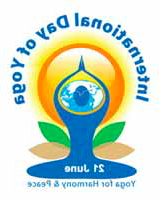Relevance of Symbolism of Shakti
Modern Indian women are second to none in taking leadership roles in various fields including business, industry, corporate world, sports, politics etc. Everyone knows the important, all pervading role of the Rajmata starting from Rajmata Helena Maurya in the famous political dynasties in India! Therefore, the social narrative of girls and women in a resurgent India has to change from that of Abala to Sabala and from Shanti to Shakti and from survivor to strong and from seductress to security-provider. Luckily, we do have numerous female role models for young girls to emulate and aspire. Many of them have achieved those leadership roles without much help only with the power of one. We are fortunate to have women leaders in India serve as chief ministers, as prime minister and as president. In contrast, US has not been able to have so far a woman president since it achieved independence in 1776. Women in India have equality and right to vote since the Republic was promulgated in 1950. Not so in the US where women got suffrage only in 20th century. Women of Indian origin have served as astronauts, e.g. Kalpana Chawla and Sunita Williams. They have served as CEOs of companies like Kiram Majumdar Shaw in India and Indira Nooyi of Pepsi in the US.
As a society, we can change our thinking, modify our attitudes and participate in a systematic manner in female re-empowerment, emancipation and individual self-actualization. That calls for changing the entire narrative of the Hindu society and decolonizing the Hindu mind. It also involves discarding the aberrant practices that were reflexively manifested in a kneejerk manner as society’s survival mode “fight or flight” responses. The Shakti paradigm is so integral to Hinduism and India that we have enough individual and institutional role models for young girls already. What we really need to do is to devise multi-dimensional strategies and action plans to re-internalize the Shakti symbolism in day to day life in order to re-establish the respect and the primacy of women in the contemporary Indian society. The focus has to be on nurturing the girl-child instead of fighting for a right-based approach that turns woman into a man. This also brings into question as to how we are utilizing our limited fiscal resources for the purpose of women’s empowerment.
A number of state governments across the political divide have instituted official schemes to support girls by providing some sort of gift in the form of money to be paid at the time of marriage. Fiscal incentives for education of girl-child have been introduced in a graduated manner in some states like Madhya Pradesh. The state and local governments must also provide facilities for free classes of martial arts to women for self-protection instead of merely buying mangal-sutra or giving money for marriage or dowry by the state (Dhanalaxami, ladali beti etc). Teaching martial arts to women for self-protection is a very important aspect of women’s re-empowerment. Mary Kom is a boxing legend who was nominated to Rajya Sabha recently. Santosh Yadav has the world record for being the only woman to scale Mount Everest twice. What a wonderful role model for young Indian girls! We should teach Judo, Karate, Tae kwon-do, mixed martial arts, fencing or Kalaripayattu to the girl-child free of cost for their self-protection. The state and local governments need to make budgetary allocation for women’s only gyms to teach martial arts. Let them become Durga, Kali, Chandi, or Mahishasur Mardini! More power to women! More Shakti to women! Women can do it!
Shakti Symbolism in Contemporary India
I will use case-studies at individual level and institutional level to illustrate how re-internalization of the Shakti symbolism in Hindu polity as divine, creative and supreme force can change the social narrative, increase aspirations and create obvious role models for young girls, leading to women’s re-empowerment and self-actualization from cultural grass-root levels.
It becomes clear when one reviews the following Hindu prayer:
yA devi sarvabhuteshU shaktI roopeNa samsthitA
namastassyai, namastassyai, namastassyai, namO namAh
For that goddess who is established for all the people in the form of Shakti
I bow to thee! I bow to thee! I bow to thee!
Military Participation of Indian Women
As a nation, we need to promote the role of women in our Armed forces just like it is in IDF (Israeli defense force). We have now Indian women as air-force pilots. Lok Sabha speaker Honorable Mrs Sumitra Mahajan rightly got upset recently with the BJP MP Meghwal for saying that women are afraid of flying Mig-21. Women are being inducted in the Indian Navy. Women should be and must be given permanent commission in the Indian Armed Forces if they follow the rigorous fitness standards and are willing to make the ultimate sacrifice of life in combat missions just like their male counterparts! In answer to a question asked in parliament, the home ministry replied that there are 65,739 vacant posts in the Central Armed Police Forces. There is no reason why a special recruitment drive should not focus on women’s recruitment in the central police forces. Considering the vacancy for officers in Indian armed forces, recruitment of women and awarding permanent commission will go a long way. Even in the civil aviation sector, Indian women took the lead and created history by operating the world’s longest continuous flight from Delhi to San Fransisco in an “all-female crew” on the occasion of the International women’s day! Yes, Women of India, you CAN DO it!




